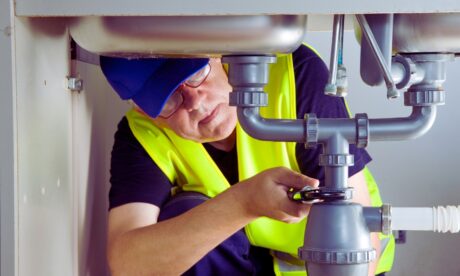What is a banksman? A banksman is a trained worker who guides large vehicles and plant machinery where visibility is poor.
They stop accidents, protect people, and reduce delays. They are the human safety barrier between heavy vehicles and everything around them. On high-risk sites, one wrong move can injure or kill. Reversing is a leading cause of workplace vehicle deaths. That’s why the Health and Safety Executive (HSE) strongly recommends using trained banksmen where reversing can’t be avoided. This role is critical. Every site manager must understand its value. Every site worker must respect the role.
Why Every Site Still Needs a Banksman in 2025
Modern vehicles come with cameras, alarms, and sensors. But they still miss things. None of that replaces a trained human watching in real time.
A banksman makes decisions. They spot danger that machines can’t detect. They act fast when something changes. Tech supports their job. It doesn’t remove it. That’s why the banksman remains central to site safety in 2025 and beyond.
What Is a Banksman? Understanding Their Daily Work
A banksman directs vehicle movement, mostly when visibility is poor. They help drivers reverse or turn near people, gear, or obstacles. This work requires strong focus and clear communication. Drivers trust banksmen to guide them safely. The banksman must stand in full view of the driver at all times. If that view breaks, the vehicle must stop immediately. Banksmen don’t only guide and they also help plan movements, clear paths, and control site traffic.
They stay alert to:
- Vehicle blind spots
- Pedestrian paths
- Reversing zones
- Loading areas
They watch everything closely, ensuring that nothing and no one is in harm’s way — preventing collisions before they even happen.

Where You’ll See Banksmen at Work
Any place where big vehicles move near people will likely have a banksman. They work in construction, public works, logistics, and even defence. You’ll often find them at:
- Construction sites – Vehicles reverse in tight areas with many people nearby.
- Ports and shipping yards – HGVs carry loads that need careful positioning.
- Factories and warehouses – Forklifts move around corners in shared spaces.
- Utility sites – Excavators and trucks operate near homes and roads.
- Military bases – Complex vehicles move in unpredictable environments.
They help stop serious incidents in every one of these sectors. Where there’s movement, there’s risk—and that’s where banksmen come in.
UK Laws That Back the Role of a Banksman
Several key laws apply to the banksman’s role. These rules protect both workers and the public from harm.
Health and Safety at Work etc. Act 1974
Employers must keep workers safe “so far as is reasonably practicable.”
Workplace (Health, Safety and Welfare) Regulations 1992
Sites must have safe routes for vehicles and pedestrians.
Health and Safety (Signs and Signals) Regulations 1996
Signals used by banksmen must be clear, standard, and agreed upon.
LOLER 1998
If lifting is involved, banksmen must plan and direct safe load movement.
PUWER 1998
Equipment, including vehicles, must be used safely with proper supervision.
HSE guidance also plays a key role. Their document HSG136 advises: avoid reversing if possible. But if reversing is necessary, a trained banksman becomes essential—not optional.
Ready to Train Like a Pro?
Check Out Our Fully Certified Banksman Course. Stay compliant, visible, and safe with expert-led training that equips your team with the skills the HSE expects—and your site demands.
How Banksmen Communicate Clearly
A banksman uses hand signals and sometimes radios to guide drivers. Clear contact between both sides is non-negotiable. Hand signals follow industry standards. Before work begins, the driver and banksman agree on all signals. If the driver loses sight of the banksman—or can’t hear them—movement stops immediately.
Some standard signals include:
- STOP – Right arm raised, palm facing forward
- REVERSE – Arms bent at waist, palms down, moving downward
- FORWARD – Arms bent at chest, palms up, moving upward
- TURN – One arm extended sideways, moving in that direction
- EMERGENCY STOP – Both arms raised, palms forward

In noisy or large areas, two-way radios help. Messages stay short and clear. Phrases like “Stop now” or “Turn left slowly” are common. No one guesses. Everyone understands what happens next.
Banksman Training: How to Become Site-Ready
Banksmen must be trained and proven competent. The HSE makes this clear. Employers must ensure banksmen know their duties and can do them safely.
Typical training covers:
- UK regulations and legal duties
- Risk spotting and movement planning
- Correct use of signals and radios
- Reversing control and site layouts
- Emergency response procedures
Courses usually take one day. Many include a written test and practical demo. After passing, learners receive a certificate, usually valid for three years. For general site access, many workers also hold a CSCS Labourer card.
For lifting roles, banksmen often complete an NVQ Level 2 in Slinger Signaller. They may also hold a CPCS or NPORS card for plant or lifting categories. Employers should check credentials. Workers should keep them up to date.
The Benefits of Having a Trained Banksman
A good banksman brings safety, speed, and control. They reduce risk and help sites stay on track. They protect people, property, and project timelines.
A trained banksman helps to:
- Prevent collisions with people, vehicles, or equipment
- Improve movement flow during busy times
- Reduce time wasted on awkward reversing
- Lower the chance of costly damage or delay
- Build a stronger safety culture on site
Drivers also feel more confident. They know someone reliable is guiding them every step of the way.
What Makes a Good Banksman in 2025?
The best banksmen stay alert and proactive. They speak clearly and act quickly. They plan ahead, not just react. Tech tools may support them—cameras, sensors, trackers—but human focus remains vital. Machines can’t read body language or spot shifting site hazards. People can.
Top banksmen:
- Stay in full view of the driver at all times
- Use only agreed signals or language
- Stop work if risk increases or visibility drops
- Help plan safe reversing and loading areas
- Work closely with supervisors to update traffic plans
They don’t guess or don’t freeze. They lead.
Final Word: What Is a Banksman? The Person Who Stops the Worst from Happening
So, what is a banksman? They are your site’s eyes, ears, and early warning system. They step in where mirrors and cameras fall short. Reversing kills. Collisions cost. Downtime delays everything. A well-trained banksman keeps all that from happening. HSE guidance backs their role. UK law supports it. Every site with moving vehicles should treat this role as essential.
Train them well. Use them always. Trust them to keep your people safe.



